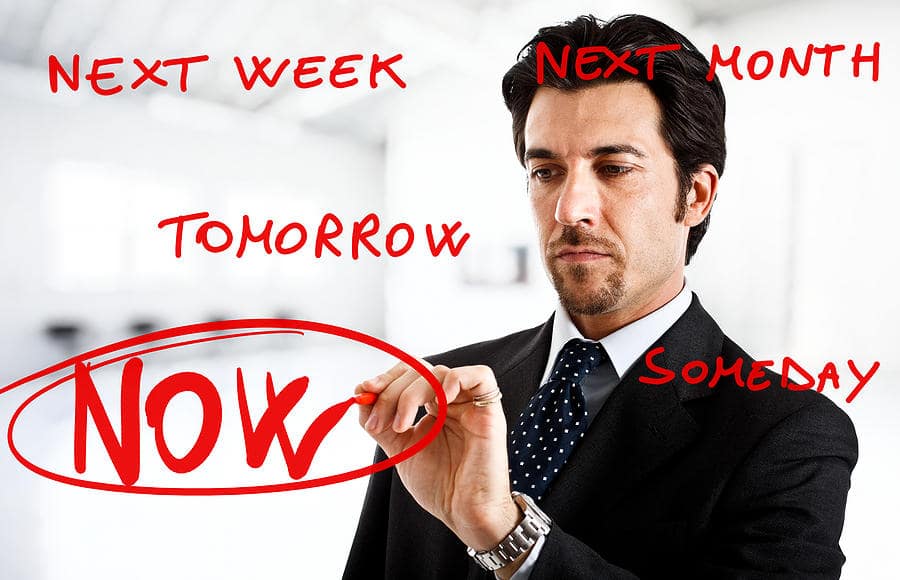This week’s article was written by James Brenza. It is a companion to his interview on Innovating Leadership, Co-creating Our Future titled Leading in Emerging Industries that aired on Tuesday, August 3rd.
I recently shifted my business and technology leadership skills to a new industry. It is an opportunity to help a burgeoning industry improve operational efficiency, improve patient outcomes and help operational leaders be more effective. My career focus has been technology, data, and analytics. My career took a tangential shift when I started Greenest Grow, a company that focuses on creating sensors and software to support efficient cannabis growth. After watching my brother and father suffer extreme pain during the end stages of cancer, I decided to shift my strong professional focus to an area that would help others have a better experience than my family had.
Leaders are frequently called on to step into new industry domains. Sometimes, we invite ourselves into those domains. While the reasons for the shift can be numerous (e.g., burgeoning market opportunities, industry transitions, or personal growth), there’s one constant you’ll encounter: change. While it may be obvious that you’re going to instill change in the new industry domain, you’ll also need to accept some changes yourself. For many people, that second change can be the harder one to anticipate and accept.
My shift required a great deal of soul searching and business research to ensure I was focusing on an area that would have a positive impact on the industry, be financially viable, make the impact I wanted to make for cancer patients and their families. It was also critical that I not provide a gateway drug that might exasperate our global drug addiction issues. This shift has been a bit easier by focusing on 3 key elements:
- Adapting and applying the lessons I’ve learned in other industries. When you step away from the details, there are nearly always parallels you can identify and solutions you can leverage.
- Applying domain knowledge in common areas (e.g., technology, marketing, and finance).
- Adjusting your interpersonal approach to adapt your knowledge to the new domain while garnering acceptance.
That last element, adjusting your interpersonal approach, may be difficult to navigate. “Leading” is getting in front and charging forward, right? While that may work for some, I’ve found it’s generally more effective to gain acceptance and facilitate change through others. While we may need to be “in the forefront”, we can also remain humble and gain perspective. One very effective method is leading with questions to facilitate mutual understanding. If you’re attempting to explain how a prior experience can help solve a challenge, you’ll likely find a very short story will help. That will help others see the parallel to their challenge, consider it differently, and adapt/adopt a new approach.
Throughout a cross-industry transition, it’s critical to remain true to yourself and your values. Consider this: if you can’t lead yourself, how can you lead others? If you can’t succinctly state your values, you may encounter unnecessary turbulence when you encounter new problems. By clarifying your values, it will be much easier to navigate the gray areas and avoid a potential abyss. More importantly, it will help you focus your value proposition and avoid conflicts with your “true north”. By being true to yourself and your values, your new team and industry peers will immediately perceive your sincerity.
The Innovative Leadership Mindset model from the Innovative Leadership Institute provides a robust perspective to help you lead more effectively. Here’s a summary of the mindsets and examples of how I applied them.
| Leader 2050 Mindset | Application |
| Be professionally humble | You, your peers and your team know you have a lot of expertise. However, you’re stepping into a new domain. It’s important to remember that others have spent decades in that domain and possess a lot of industry wisdom.
I am a 50+ year old man who has never used drugs. I was trying to enter the cannabis industry, which is closed by necessity because of the legal challenges. I needed to observe, learn, build relationships before even stepping into a grow house. I went from being the industry expert to the new guy in this industry with extensive experience that would help solve significant challenges and improve operational efficiency. I found it helpful to spend 3-4x more time listening than speaking. I also try to introduce new approaches with a question that invites discussion rather than blunt statement or order. |
| Have an unwavering commitment to the right action | I was an Eagle Scout growing up. I didn’t use illegal drugs. When my brother and father died from cancer, I began to explore the available options to help other cancer patients and their families. I looked at questions of ethics such as is cannabis a gateway drug. Each of us will find our own path. For me, my research made me confident that I could pursue this path and help many people by improving the growing efficiency, which will help produce consistent medicinal cannabis at a lower cost. |
| Be a 360-degree thinker | This was certainly a new domain for me. The size of the puzzle I was facing increased dramatically. Prior to jumping into action, I had to invest time and effort into understanding the entire landscape, identify parallels I could leverage as well as blind spots I needed to question. I relied on Stephen Covey’s sage advice: “seek first to understand, then to be understood”.
I partnered with a broad range of people to help me solve significant business issues such as addressing the ability to retain a bank account as a business that supports the cannabis industry. I learned about running a manufacturing business and the contract manufacturing process, about all of the elements in the manufacturing value chain and the cannabis value chain. I sought a board with a range of experience and strategic partners to help in areas where they were experts. |
| Be intellectually versatile | I was stepping into a new domain. It was disconcerting to not have all the answers immediately. I had to open my mind to new knowledge, new experiences, new information, new perspectives – before I could apply any existing mental constructs. I also realized I would never develop the skills that others have spent decades honing. I adapted my approach to ensure that I was building a team that could fill my voids while I applied my skills to help them reach a new level. Collectively, the intellectual capacity of the team increased dramatically. |
| Be highly authentic and reflective | As I processed new information and perspectives, I needed to “double click” on my firmly held beliefs and values. I knew that if I varied from my “true north”, I wouldn’t be able to work or lead effectively. I had to think deeply to understand my values, what they meant and how they are accomplished. I value both helping people mitigate pain AND I value laws and a focus on avoiding making illegal recreational drugs more accessible if they function as a gateway drug. I also had to incorporate more research to validate accepted concepts. I grappled with my initial view of “drugs”, my values and the research and ultimately refined how I viewed cannabis. Lastly, it was important to ensure I was applying concise logic and not simply rationalizing to support a business model. This process was an important one. I use the word grappling because I needed to think deeply about what I support, what ventures I want to invest my energy and financial resources into. For many entrepreneurs, this is an important step to consider. |
| Be able to inspire followership | Many individuals look to the “leaders” for the instant answer. However, many leaders know there isn’t always an easy or instant answer. I’ve found that it’s a very fine balance to be both collaborative (seeking input) as well as a visionary that can offer the team a new outcome. I’ve found it helpful to introduce a vision followed by a series of questions that invite conversation to help validate, refine and gain adoption. This “softer” approach helps me empower the team to expand the thinking, influence the adoption of new methods, and encourage collective ownership for sustainable change. We built a shared vision through a process that gave them a voice in the outcome. They also built trust in me and the leadership team through this process. |
| Be innately collaborative | The delicate balance I mentioned above shows up in the tension between inspiring people to follow me and inviting them to collaborate. I’ve realized my first thought should always be to find a way to bring others into the thought process and solution development. Lasting change is only instilled if others are buying into the changes. I’ve observed many organizations rebounding to old behaviors due to the solution being incomplete or a lack of shared ownership. I’ve increased my focus on bringing the team together rather than trying to provide all the answers. |
Leading through changes and transitions can be both frustrating and rewarding. As you see from the brief account of my experiences, this change in direction has been highly rewarding and also one of the more challenging endeavors I have taken on. At the end of the day, I will accomplish a goal that I am very proud of, improving the lives of people with cancer and the lives of their families. To do this, I needed to remain curious, facilitative and true to myself.
As you think about yourself as an entrepreneurial leader, what is your story? If you look at the seven mindsets, how would you describe your journey? Does this process reveal any gaps you would like to attend to?
To become a more innovative leader, you can begin by taking our free leadership assessments and then enrolling in our online leadership development program.
Check out the companion interview and past episodes of Innovating Leadership, Co-creating Our Future, via iTunes, TuneIn, Stitcher, Spotify, Amazon Music, Audible, iHeartRADIO, and NPR One. Stay up-to-date on new shows airing by following the Innovative Leadership Institute LinkedIn.
About the Author
James Brenza is an entrepreneur, information technology and analytics leader with 30 years of diversified experience. He is a hands-on leader who carefully balances strategic planning, business communications, and technical delivery. He has extensive experience with motivating mixed-shore teams to deliver high-quality, flexible results. James’ academic foundation includes 3 degrees: Information Technology, Finance, and an MBA. He complemented his technical skills with a Six Sigma Black Belt, Lean Qualification, and PMP certifications. He applies that foundation to solving problems in agriculture, banking, insurance, retail, distribution, manufacturing, pharmaceuticals, and public service. He led analytic programs that have paid for themselves upon implementation and delivered first year ROI’s in excess of 10,000%.





